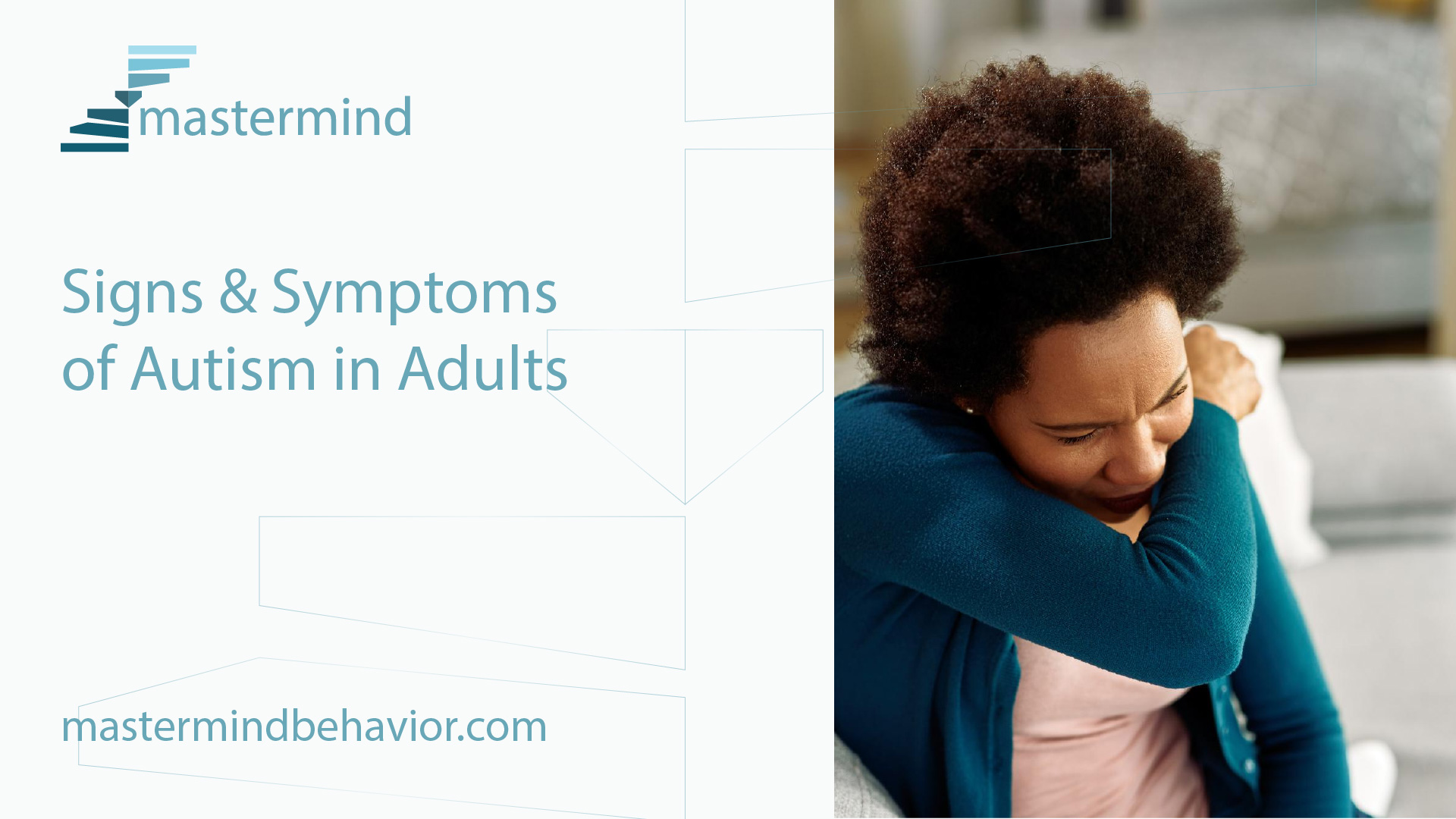What to expect when working with an Autism Behavioral Therapy program practitioner
What to expect when working with an Autism Behavioral Therapy program practitioner
Blog Article
Recognizing the Effect of Behavioral Autism on Day-to-day Live and Social Interactions
You may not realize how deeply behavior autism influences everyday life and social communications. Individuals on the spectrum usually navigate a globe full of interaction difficulties and sensory overload. These obstacles can lead to irritation and seclusion, affecting their connections and total health. Recognizing these subtleties is important for promoting helpful atmospheres. What methods can we carry out to develop more inclusive rooms and meaningful connections? The solutions may shock you.
Defining Behavioral Autism and Its Qualities
Behavioral autism, often described as autism range disorder (ASD), includes a variety of problems characterized by challenges in social communication, communication, and recurring habits. You may discover that people with ASD commonly struggle to analyze social hints, which can result in misunderstandings in discussions. They may discover it hard to develop eye call or take part in tiny talk, making social circumstances feel frustrating.
Communication difficulties can manifest in various ways, from postponed speech advancement to a preference for making use of fewer words. Repetitive actions, such as hand-flapping or rocking, can offer as coping devices to manage stress and anxiety or sensory overload. These attributes can profoundly influence day-to-day live, making it necessary for you to understand and sustain those with ASD. By identifying these characteristics, you can cultivate a setting that promotes acceptance and encourages efficient interaction, assisting people with autism grow in their everyday communications.
The Range of Autism: Understanding Variability in Actions
Autism spectrum disorder (ASD) isn't a one-size-fits-all diagnosis; it varies extensively amongst people. You might run into people that are very spoken and engage easily in discussions, while others could choose solitary activities or connect non-verbally.
Moreover, the method people with ASD react to sensory input can differ considerably; some may be bewildered by intense lights or loud noises, whereas others thrive in boosting settings. The range also consists of distinctions in social communications; some individuals might struggle to analyze social signs, while others navigate social setups with loved one convenience. Comprehending this irregularity is important, as it aids you value everyone's distinct experience and dressmaker assistance to their certain requirements, cultivating a much more inclusive environment for every person.
Communication Challenges Dealt With by People With Autism
When you engage with people on the autism range, you might observe their special communication obstacles. They usually deal with difficulties with both nonverbal and spoken hints, which can impact their social communications. Understanding these obstacles is crucial for cultivating better links and support.

Verbal Interaction Problems
Lots of people on the autism range experience spoken communication difficulties that can substantially impact their daily interactions. Your volume, speed, or tone may not straighten with social assumptions, creating others to misunderstand your purposes. Identifying these obstacles can assist you and your support network establish techniques to enhance communication and foster better links with others in your day-to-day life.
Nonverbal Communication Obstacles
Verbal communication isn't the only challenge people on the autism range face; nonverbal communication barriers can be equally as substantial. You might discover it difficult to translate body language, face expressions, and eye call, which are important for reliable interaction. These difficulties can result in misunderstandings or misinterpretations of social cues, making communications feel overwhelming or complex. You may struggle to share your very own emotions via nonverbal means, leaving others unclear of your objectives or sensations. This separate can produce sensations of isolation and irritation. Acknowledging these obstacles is critical for promoting understanding and compassion in your interactions. By addressing nonverbal interaction, you can locate methods to enhance your social experiences and improve your total top quality of life.
Social Interaction Influences
Social interactions can frequently feel frustrating as a result of the one-of-a-kind communication difficulties encountered by individuals with autism. You may deal with interpreting social hints, making it tough to recognize mockery or body language. This can result in misunderstandings or uncomfortable moments in discussions. In addition, launching and keeping conversations may really feel tough, creating anxiety in social situations. You might favor organized settings, making spontaneous interactions unpleasant. It's likewise usual to experience problem in engaging in little talk, which can impede creating brand-new friendships. Recognizing these challenges can assist you discover techniques to improve interaction, such as practicing social skills in safe setups or making use of aesthetic help - Autism Spectrum Therapies. Comprehending your requirements allows you to navigate social interactions with higher confidence and simplicity.
Social Interaction and Partnership Structure in Autism
While structure relationships can be challenging for people with autism, understanding their special perspectives and communication styles can cultivate purposeful links. You could observe that numerous people on the spectrum choose direct interaction and might have problem with social hints or little talk. By being uncomplicated in your communications, you can assist create an atmosphere where they really feel comfy.
Make the effort to observe and listen exactly how they share themselves. This insight can lead you in steering discussions more properly. Participating in shared rate of interests can also act as a bridge to much deeper connections. Whether it's a hobby, a favored show, or a shared enthusiasm, these usual threads can open doors to relationship.
Life Regimen: Browsing Challenges and Methods
Steering day-to-day live routines can be particularly challenging for individuals with autism, especially when unexpected changes happen. You may discover comfort in having an organized schedule, as it helps you anticipate what's next. When disruptions occur, it's regular to really feel overloaded or anxious. To navigate these obstacles, consider applying aesthetic timetables or checklists. These devices can give clearness and peace of mind.
Establishing a routine that includes sensory breaks can also be helpful. You can prepare time-outs throughout your day to recharge. It's important to communicate with those around you, letting them recognize your choices and requirements. This assists create an understanding setting.
Lastly, technique mindfulness methods to handle tension and anxiousness. Straightforward breathing exercises or grounding strategies can make a significant distinction. By including these techniques, you can enhance your everyday routine and decrease disturbances, making life feel much more convenient.
Strengths and Capacities of Individuals on the Autism Range
Understanding day-to-day live regimens is simply one element of the autism experience. Numerous individuals on the autism spectrum have exceptional strengths and abilities that establish them apart. You could discover that your focus to detail is remarkable, permitting you to excel in jobs that require precision and emphasis. Your capability to think outside package can cause innovative services in numerous circumstances.
Furthermore, your memory abilities frequently radiate, particularly in locations of passion. Aba Therapist. This propensity for retaining details can make you a beneficial resource in fields like science, art, or technology. You may also exhibit solid aesthetic reasoning, allowing you to imagine intricate ideas and fix troubles artistically
In addition, your one-of-a-kind perspective on the world can foster compassion and understanding in others, improving social communications. Welcoming these strengths not just enhances more info your self-confidence but also aids others value the diverse talents you offer the table.
Developing Comprehensive Settings for Individuals With Autism
Developing comprehensive settings for people with autism starts with developing sensory-friendly spaces that provide to their distinct requirements. You can also foster opportunities for social communication, assisting to develop connections and relationships. By making these adjustments, you'll add to an extra welcoming atmosphere for everybody.
Designing Sensory-Friendly Spaces
While designing sensory-friendly rooms, it's crucial to assess the one-of-a-kind requirements of individuals with autism. Start by selecting relaxing colors and soft lighting to produce a comforting setting. When overwhelmed, incorporate silent zones where people can pull back and reenergize. You'll want to decrease loud noises and distractions, utilizing soundproof products or white sound devices to aid keep harmony. Think about responsive aspects like soft textiles or fidget-friendly objects that can supply convenience. Establish that rooms are flexible, enabling for easy rearrangement to suit various activities. Consist of visual schedules or clear signage to aid people browse the room confidently. By attentively integrating these elements, you can develop an inviting environment that supports sensory requirements and advertises overall wellness.
Promoting Social Interaction Opportunities
Creating read more sensory-friendly areas not only addresses specific comfort yet likewise establishes the stage for purposeful social communications amongst people with autism. Motivate peer mentoring, combining people with autism with encouraging peers that can guide them via social circumstances. By implementing these approaches, you can improve social opportunities, assisting individuals with autism construct relationships and reinforce their social skills in a secure, welcoming atmosphere.

Regularly Asked Inquiries
How Can Pals Support A Person With Behavioral Autism?
You can sustain a pal with behavior autism by holding your horses, paying attention proactively, and valuing their boundaries. Participate in tasks they appreciate, interact freely, and develop a comfy atmosphere where they here feel valued and comprehended.
What Resources Are Readily Available for Parents of Kid With Autism?
You can explore numerous sources for moms and dads of children with autism, consisting of assistance teams, instructional websites, and local social work. Connecting with other moms and dads can additionally give important understandings and shared experiences to aid browse challenges.
Can Behavioral Autism Change With Time?

Yes, behavior autism can alter over time. You may see changes in interaction, social skills, and behavior as your kid grows. Early treatment and assistance often play important roles in these developmental adjustments.
Just How Do Sensory Level Of Sensitivities Affect Day-to-day Live?
Sensory sensitivities can make everyday experiences overwhelming. You could battle with bright lights or loud noises, leading to anxiety or avoidance. Finding settings that fit your requirements can substantially boost your convenience and overall day-to-day live.
What Are Typical Misconceptions About Behavioral Autism?
You could believe behavioral autism only affects communication skills, yet it's more facility. Numerous think individuals do not have empathy or intelligence, which isn't true. Understanding these misunderstandings helps foster approval and support for those on the range.
Behavioral autism, frequently referred to as autism range condition (ASD), includes an array of conditions characterized by challenges in social communication, interaction, and recurring habits.Social communications can typically really feel frustrating due to the one-of-a-kind communication difficulties dealt with by people with autism.Creating sensory-friendly areas not just addresses private comfort yet additionally sets the phase for purposeful social interactions among individuals with autism. Encourage peer mentoring, combining individuals with autism with encouraging peers who can guide them via social situations. By carrying out these methods, you can boost social possibilities, aiding people with autism construct relationships and strengthen their social abilities in a secure, welcoming atmosphere.
Report this page